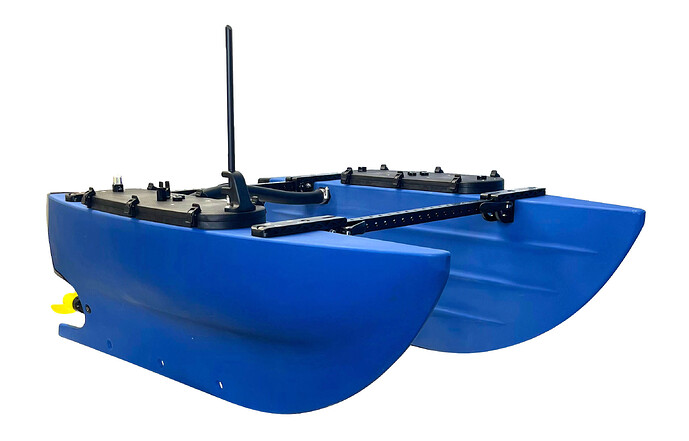The end of a journey several years in the making, and the start of a new sea of wonders - we’re excited to share that BlueBoat is now available to the public! ![]()
Some context…
You may know of Blue Robotics as
- a marine robotics component manufacturer
- an underwater vehicle maker (BlueROV2!)
- the ArduSub maintainers (originally lead by @jaxxzer, and now @williangalvani)
- or perhaps as friends and active members of the marine robotics and ArduPilot communities
From our start with @rjehangir’s T100 Thruster Kickstarter campaign in 2014, we’ve grown into all of those and more. Now, as the latest stage of our rise from the depths, we’re proud to present our first ever surface vehicle - the BlueBoat:
We first had the idea for this back in 2015, and have prototyped, tested, and refined (with community support) since ~2017 to reach the level of quality, affordability, and hack-ability available today.
As a product we stand behind, we want you to know and trust the quality of the base system and components, while also being empowered to perform modifications and add integrations that can turn it from “a cool boat platform” into “your ideal boat”.
Some details…
Many of these have been known for a while (especially since Willian and I brought a BlueBoat to this year’s ArduPilot dev conference…), but here’s a summary of some of the main features:
| Feature | Details |
|---|---|
| Open Source Software | - ArduBoat (Rover) autopilot firmware - BlueOS onboard computer software (includes an extension system) - QGroundControl control station software (Cockpit coming soon!) |
| Accessible Hardware | - Navigator flight controller (with Raspberry Pi 4B onboard computer) - 2x M200 Motors for skid-steering (with Weedless Propellers) → 3m/s (6kts) max speed (w/ 2 batteries, no payload) - Plenty of convenient mounting holes (and an optional Payload Bracket for extras) - 6x M10 and 2x M14 holes spare for electronics/hull access (for cable penetrators, an extra NavLight, etc), with area to drill more - fits in most car boots/trunks (1.2m length, 0.7m width when folded, 0.91m width when deployed) - 14.5kg weight (without batteries/payload) - up to 8x 4S-6S batteries - 15kg payload capacity (including batteries) |
| Guides & Support | - Assembly, Software Setup, and Operation guides - Dedicated category on the Blue Robotics forums - 2D drawings and 3D models for hardware integrations (see the Technical Details on the product page) - BlueOS Extension development documentation |
Now what…?
We’ll keep cranking these out and supporting them, so now it’s your turn to get yours, do something cool, and share it with the world!
We can’t wait to see the applications you come up with, and find out how we can help your dreams swim into reality ![]()
Sea ya!

